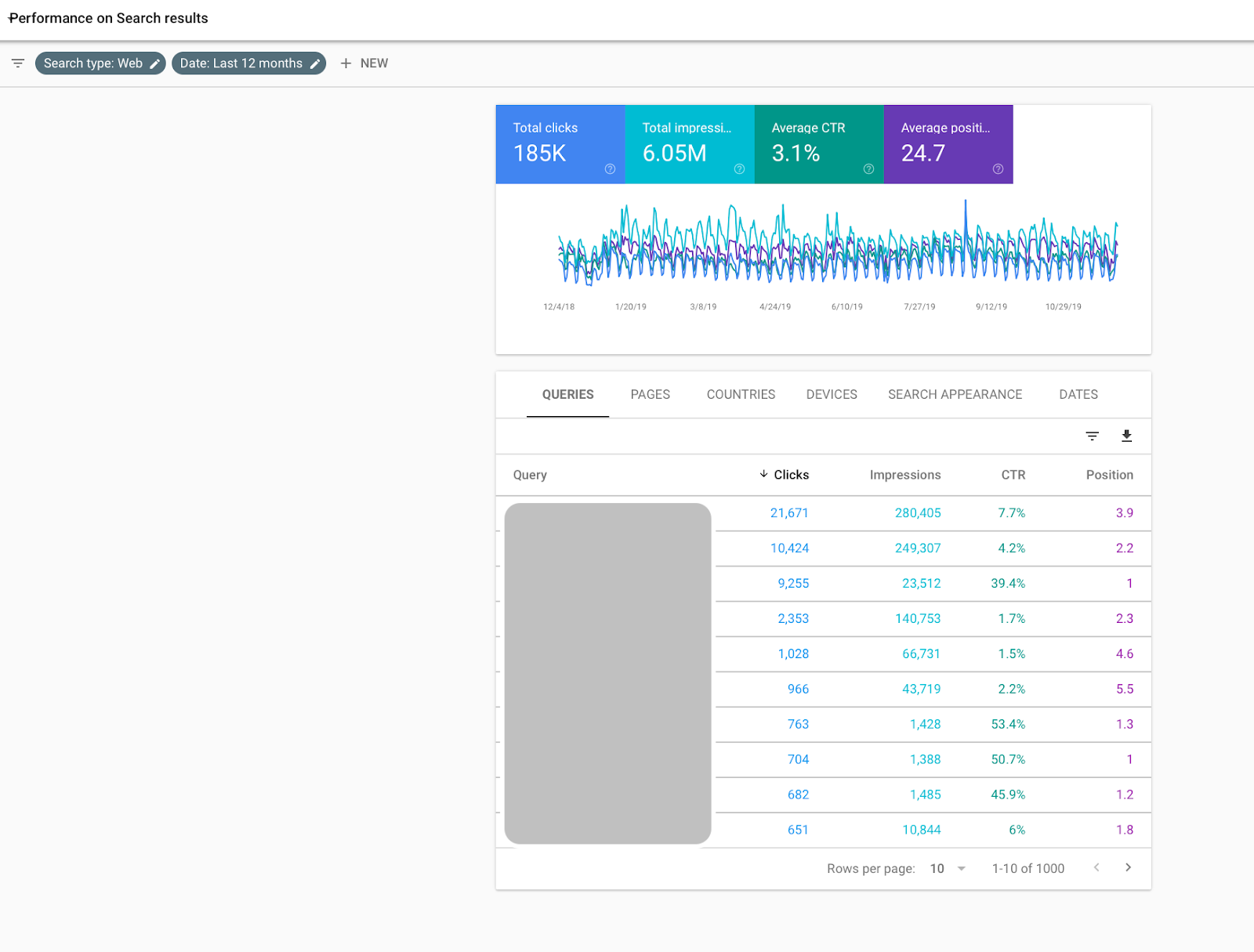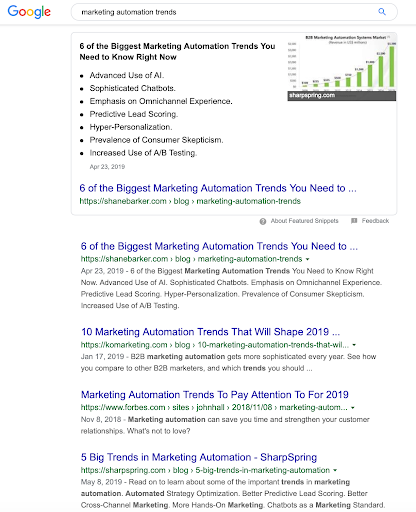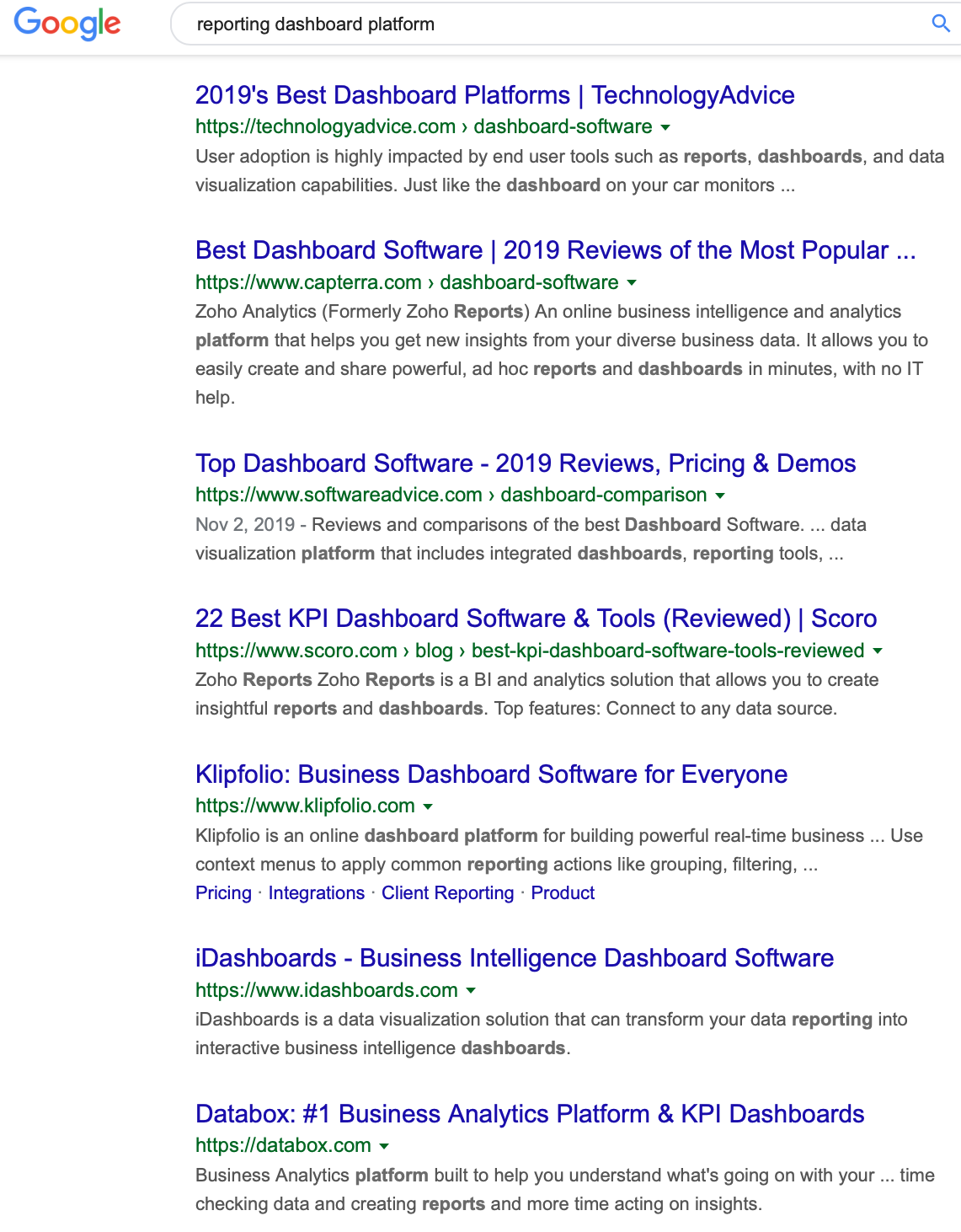When thinking about the goals of your website – whether you want to increase traffic, drive conversions and/or improve keyword rankings – it’s important to ensure you’re optimizing for a specific user intent.
Otherwise, you’ll find yourself in a position where the website is driving traffic or rankings, but not actually contributing to business revenue. For an SEO, this is detrimental.
This all comes down to targeting the right keywords, getting the right users to your site and driving the right conversions – conversions that will actually lead to a purchase and aren’t merely numbers in your reporting dashboard.
Simple, right? Not so much. In this post, I’ll be covering the process of ensuring your website is optimized for a specific user intent.
What is user intent & why does it matter for SEO?
Before jumping into particular tactics, let’s set a solid foundation by defining user intent and what it means for SEO.
To understand what user intent is, you must understand Google’s mission, which includes:
“Our goal is always to provide you the most useful and relevant information. Any changes we make to Search are always to improve the usefulness of results you see.”
With that in mind, Google displays what results or pages it deems most relevant around a particular search query based on its understanding of users’ desires.
User intent is especially important for you to consider in order to rank well for keywords that align with the broader business objectives.
Types of search intent
Knowing the different types of search intent will ultimately help determine the relevancy of a query and what content will be required to rank. There are four main types of search intent to be aware of. These include:
- Informational: Users that have a specific question or want to know more about a certain topic. The intent is to find information and become more educated.
- Navigational: Users trying to get to a specific website. The intent is to evaluate a specific brand, topic or theme more closely.
- Transactional: Users looking to buy. These searches are directly aligned to the buying process and represent a purchase action.
- Commercial investigation: Users with the intention to buy in the near future who are in the process of researching. This is similar to transactional intent; however, the user needs more time.
Google refers to these intents, in section 12.7 of the Search Quality Evaluator Guidelines, as “Know”, “Website” and “Do”, and adds a “Visit in Person” intent.
How to optimize for the right user intent
As I mentioned, in order to optimize for a particular user intent, you must: target the right keywords, get the right users to your site, and drive the right conversions. Below, I’ve outlined the process and specific steps in doing so.
1. Understand what keywords are driving visibility for your website.
The first step in this process is having a solid understanding of what queries are currently driving visibility for your website.
Analyzing this data will help get a better understanding of where your site is today: what queries are having the biggest impact on organic search visibility, and any keyword gaps that are present.
Head into your Google Search Console account and export queries, clicks, impressions, click-through-rate, and average position data over at least the past year.
This can be done with the following steps:
Performance -> Search results -> Search type: Web -> Date: Last 12 months (or 16 months) -> Click on Total clicks, Total impressions, Average CTR, and Average position -> Navigate to the Export Data button (arrow on the right side of the page)

Look at the queries and pages driving the most clicks and impressions to your site.
You’ll also be able to spot queries and pages that may be driving significant impressions but aren’t getting clicks into the website.
This is typically an indication that the search intent is not aligned with the content you are offering, which presents an opportunity for optimization or new content. (Note: I’ll dive into this more later in this post.)
Additionally, this exercise will help you identify keyword gaps on your website. What other terms does your brand want to be known for that are driving little or no visibility for your site currently?
2. Evaluate the intent of these queries.
Once you have a solid understanding of the top queries driving clicks and impressions on your site, you’ll want to do a more thorough analysis of what is showing up in search results for those terms.
Evaluating the top search engine results pages (SERPs) around these keywords will ensure you’re aware of the search intent, or at least what Google has determined most relevant to each query.
While there are a variety of tools available to help make the SERP analysis process less manually, I always recommend exploring the actual results on Google. Ask yourself:
- What types of websites are ranking? (Wikipedia, reviews, specific brands)
- What types of assets are being displayed? (articles, platform pages, research)
- What SERP features are being displayed (Answer Box, Knowledge Graph, People also asked, etc.) and what do they include?
- What related searches are being displayed at the bottom?
Taking a technical approach
As I mentioned, manually looking in search results and adding search intent labels across all of your keyword targets can be extremely time consuming. There are several technical approaches to SERP analysis that can help:
Excel formulas: You can easily streamline query analysis by using the REGEXMATCH formula in Google Sheets. All you need is a complete list of the queries you want to evaluate in an Excel file, and a solid understanding of any keyword modifiers unique to your business and industry.
Screaming Frog extraction: Using Screaming Frog to extract the Related Searches and People Also Ask suggestions that Google displays for certain keywords can be useful when it comes to spiking content ideas and even optimizing on-page content. However, in order to understand the intent behind these search queries, scrape the page titles and meta descriptions from Google.
Syntax analysis: Conducting syntax analysis of queries is also key. Don’t make the mistake of addressing active and passive intent in the same manner, or not paying attention to query syntax at all!
SEO Content Template: SEMrush’s SEO Content Template is also a great tool to leverage, as it analyzes your top 10 rivals on Google and provides ideas to write optimized content – everything from related keywords to backlinks, readability, text length and more.
Remember that search intent can change over time, so take into account any major seasonal elements or events that might have influenced the SERPs on the day you evaluated them.
Examples
Marketing automation trends
Looking at the top results for “marketing automation trends,” it’s clear that the query
has informational intent.

Organic results on the first page include all articles that are structured as lists and
include descriptive adjectives like “biggest” and “top.”

[Case Study] Keep your redesign from penalizing your SEO
You can also see that this query is timely, as results and related searches include
“2019” and “2020” in them.
Reporting dashboard platform
Top search results for “reporting dashboard platform” include a mix of material from
review websites and specific brands/solutions. This query shows transactional intent.

Results on the first page include third party websites that provide unbiased reviews,
lists of the best software, and home pages of specific brands offering a solution. Titles
include descriptive adjectives like “best,” “top,” and “#1.”
Don’t stop there. Make sure to actually click into the pages ranking and figure out other commonalities or factors are contributing to the success. Consider the following:
- What type of asset is it?
- How is the page formatted?
- What information is offered on the page?
- How extensive is it? What is the word count?
- Are there images, videos, or other multimedia collateral?
- How many backlinks has the page generated and from where?
These questions will lead to important findings and help you determine next steps to better align your website with the user intent. That brings me to my next point.
3. Apply these findings to your content efforts.
Now it’s time to apply these findings to your content optimization and development efforts. This could include optimizing the existing content on your website (from a copy perspective, as well as conversion-friendliness), or creating new content.
Based on your SERP analysis and the priority keywords that you’ve determined, you’ll want to further optimize the pages that rank to better align with the user intent. In some cases, you may need to create an entirely new asset.
Optimizations should include:
- Page tagging
- Copy adjustments and additions
- Headings and formatting
- Keyword usage
- Cross-links (internal and external)
- Images / ALT attributes
- Call-to-actions
The goal here is to optimize core pages to ensure you’re gaining organic visibility, targeting keywords with the proper search intent, providing information searchers are looking for, and keeping the content fresh.
When making optimizations to a page, it’s key that you have the proper tracking in place to be able to accurately measure the success of these changes. More specifically: traffic, conversions and keyword improvements.
Whenever changes are implemented on a website, I always add an annotation in Google Analytics that notes the exact date and updates made. This way, I can closely monitor increases or decreases in traffic and conversions to that specific page over time, and be able to pinpoint the exact optimizations having an impact.
Using a keyword position tracking tool is also essential. I prefer setting up a project in SEMrush to watch keyword performance, and adding tags to the keywords that are being prioritized for content optimization or development. However, there are a variety of other keyword tracking tools to consider as well.
Final thoughts
User intent should always be top of mind for SEOs and content marketers.
Remember, great SEOs are able to prove real business value by driving quality conversions on a website and, ultimately, revenue. Optimizing your website for the right user intent is essential in doing this.
And, now you are one step closer to ensuring your website is optimized for success! Did I miss anything? Feel free to reach out to me directly on Twitter @Kristen_Vaughn.

